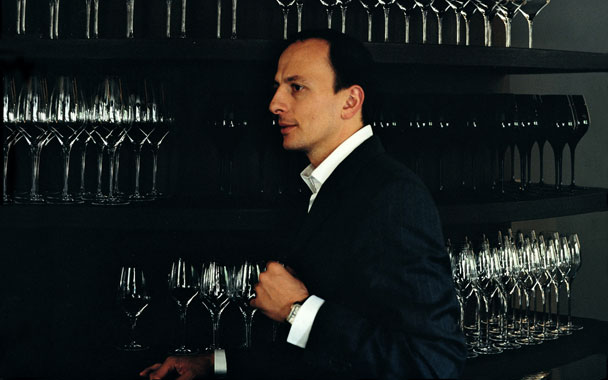A wine bar, by definition, should be a place that’s serious about wine, offering a good assortment by the glass, with an actual bar where customers can consume a glass or three, whether or not they have anything to eat. The original Parisian ones were modest neighborhood comptoirs (literally, “counters”). They listed wine simply by generic name—Sancerre, Beaujolais, Cahors—with no mention of vintage years or producers; the food was rarely more elaborate than pâté, salami-like saucisson, and basic sandwiches. But they provided a quintessentially Parisian experience. Slouching against a time-worn zinc-top counter while a red-faced Frenchman in a Cabernet-stained apron poured glasses of something from the family property in Chénas and set down plates of duck rillettes or Camembert—that was Paris. However, when I spent a week not long ago visiting wine bars in every corner of the city, I discovered there’s a lot more to the modern wine-bar experience these days—and was reminded that some of the best examples aren’t even owned by the French.
Mark Williamson, a lanky Brit from Buckinghamshire, arguably started the modern wine-bar movement when he established Willi’s Wine Bar some 28 years ago. But Williamson gives credit for a first, tentative extension of the concept to Georges Bardawil, a Parisian journalist who, in 1978, opened a sort of super-comptoir called L’Écluse, on the Left Bank. “Instead of just pâté and saucisson and ordinary wines,” says Williamson, “Georges served foie gras, carpaccio, duck-breast ham, and good Bordeaux. L’Écluse took the comptoir idea to a higher level.”
But Williamson went further still. After what he has called “an education almost exclusively devoted to water sports on the Thames” at boarding school in England, he apprenticed in the classically French kitchen at London’s Connaught Hotel, then cooked in Paris, everywhere from the Galeries Lafayette department store to the posh Pavillon Royal. One year, for a change of pace, he worked a harvest at Château Ramage la Batisse, in the Médoc, and fell in love with wine. Back in Paris, he got a job at Caves de la Madeleine, a wine shop owned by fellow Englishman Steven Spurrier, taking classes at Spurrier’s Académie du Vin wine school in his spare time. (It was Spurrier who organized the wine-world-shattering “Paris tasting” of 1984, in which prominent French wine experts rated several California wines above their blue-chip French counterparts.)
After three years in the wine trade, Williamson started thinking about opening his own place. “I wanted to have a wine bar that would specialize in the wines of the Rhône, which I liked very much,” he says. “But my friend Jean-Marie Picard, who had a wine bar and shop called Le Petit Bacchus, said, ‘Rhône wines are not vins de comptoir. You need real food with them.’ ” That was fine with Williamson. He found a location he liked—a former gay nightclub with a handsome 1930s facade—and, with Spurrier supplying the wines, launched Willi’s. “There was nothing like Willi’s when it opened,” he says. “We really took the idea of a traditional bistro and put a wine list into it.” Despite Williamson’s Anglo-Saxon provenance (or perhaps because of it—the very novelty of an Englishman becoming a bistro owner and an expert on French wine got him a lot of publicity), his place was a success almost from the beginning.
Willi’s was such a success, in fact, that it started a trend. Wine bar became a Parisian catchphrase. “Everybody was calling everything a wine bar,” says Williamson, “but you’d go into some of these places and people were drinking pastis or Vittel-menthe [mineral water with mint syrup]. The whole idea became a bit of a joke.” In 1989, Frank Prial wrote in The New York Times that a dozen Parisian wine bars had closed the previous year. He also quoted Williamson as saying, “The old days, when you got by with a few cold cuts, are over. A wine bar is now mostly a restaurant that serves wine by the glass.”



 Pinterest
Pinterest


